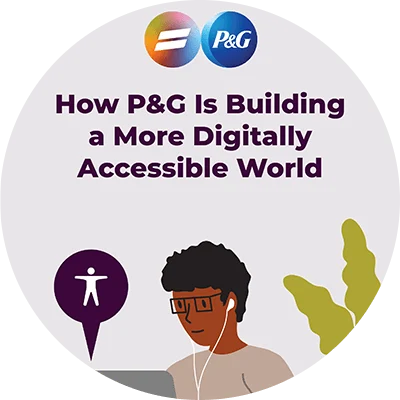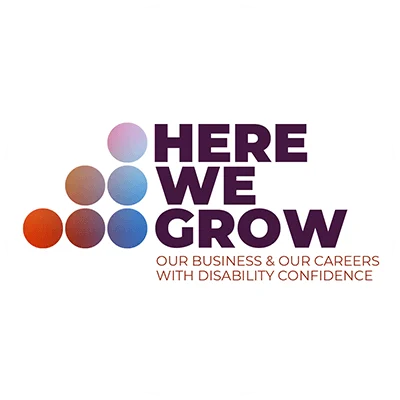5/17/2024
Embracing Digital Accessibility: Empowering Everyone

Celebrating Global Accessibility Awareness Day at P&G: Our commitment to digital inclusivity for a more accessible digital world.
Today we recognize Global Accessibility Awareness Day (GAAD), our digital accessibility efforts and the journey we’re on at P&G. In this digitally connected world, accessibility is not just a nice-to-have feature, but a fundamental aspect of creating inclusive online experiences.
We firmly believe that everyone, regardless of their abilities, should have equal access to our websites, apps and more. That's why we are committed to making our digital platforms more accessible, in line with the Web Content Accessibility Guidelines (WCAG). We have been working on this for some time with an internal team of digital accessibility testers who play a crucial role in ensuring this inclusivity.

Digital accessibility refers to the practice of designing and developing websites, apps, and other digital content in a way that enables people with disabilities to perceive, understand, navigate and interact with them effectively. It is about removing barriers and providing equal opportunities for all individuals to access information, engage with our brands, and make informed choices.
The features that make a website accessible may be invisible to many users, but they are important. Over the years we have made changes to our websites in the name of accessibility. We leverage the insights of our testers, the People with Disabilities (PwD) network, our partners, as well as our consumers and perform research with people with disabilities to ensure our platforms are accessible.

Our team works closely with our web developers, designers, and content creators to evaluate and enhance the accessibility of our platforms. They carefully review and test various components, such as navigation, content structure, color contrast, keyboard functionality, and assistive technology compatibility. They provide valuable feedback, best practices, and recommendations to ensure that our digital assets comply with accessibility standards. Some examples of these changes have been improving the color contrast on our websites like on Pampers.com or making our product discovery tools interactive to alternate input users on Oral-B.co.uk and many more.

Digital accessibility is an ongoing journey, and we are committed to continuous improvement. We also actively seek feedback from users with disabilities to better understand their needs and experiences, allowing us to make informed enhancements to our digital platforms.
We believe that digital accessibility is not just about compliance; it is about fostering inclusivity and empowering individuals of all abilities. Through the dedicated efforts of our team, we are working tirelessly to ensure that our websites, apps and other digital content are accessible to everyone. We invite you to join us on this journey as we strive to create a more inclusive digital world for all.


